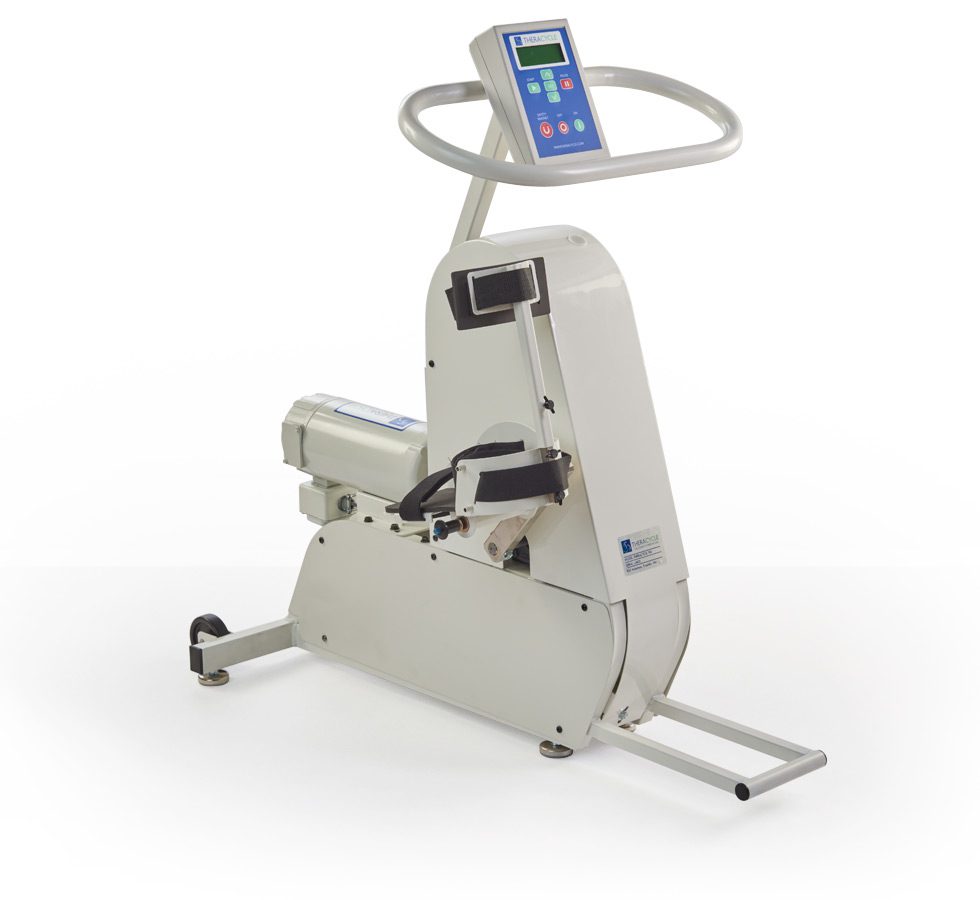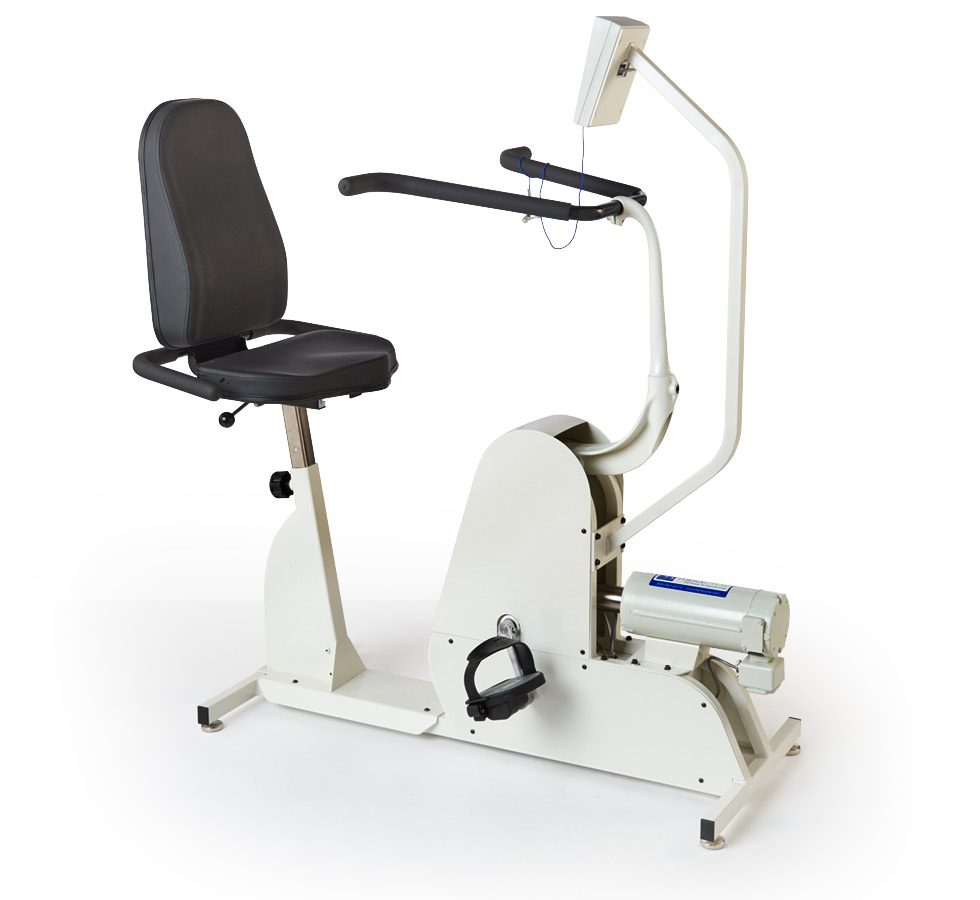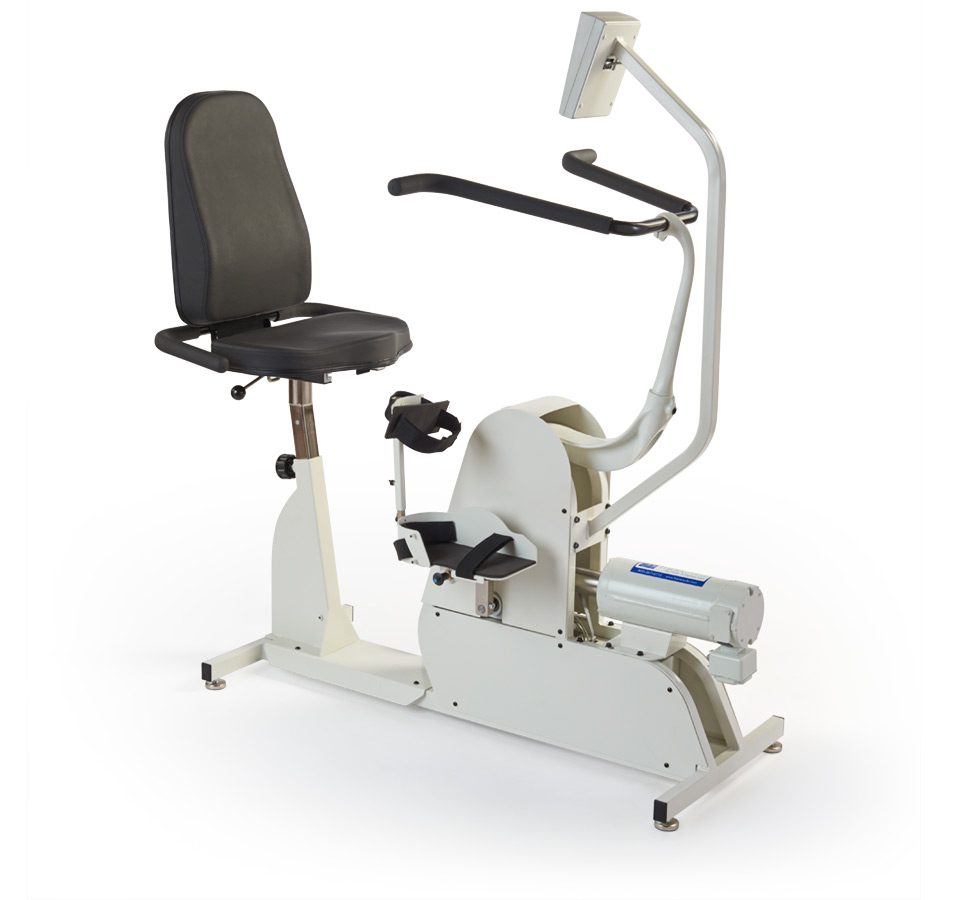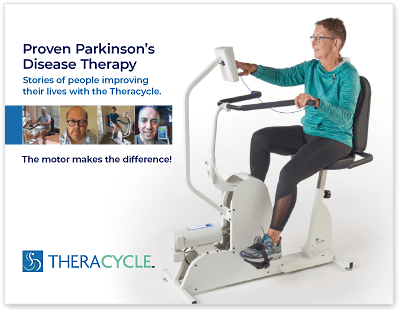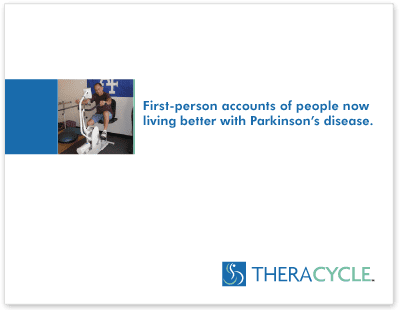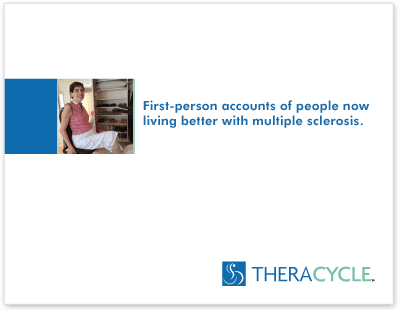- ›
- Conditions
- ›
- Theracycle and Arthritis
- ›
- Arthritis Symptoms
Arthritis Symptoms
In order to relieve as well as prevent additional arthritis symptoms, medical professionals recommend that patients remain physically active despite the initial discomfort that may be felt during certain activities. Arthritis exercise keeps joints moving, which in turn will keep them lubricated, while building strength in the muscles surrounding the affected joints adding much needed joint support. If the affected joints do not move, the surrounding muscles will become weaker, and in some cases, will shrink.
The unique motorized Theracycle allows the user to get the gentle physical exercise they need without the pain and exhaustion associated with traditional exercise equipment. Consider using Theracycle to relieve your arthritis symptoms with the Theracycle 100 for a lower body workout or aim for a full body workout with the Theracycle 200.
Osteoarthritis Symptoms
Arthritis symptoms, specifically osteoarthritis symptoms, can differ quite a bit from patient to patient depending on the severity of the joint degeneration. Some patients experience debilitating arthritis symptoms, while other osteoarthritis sufferers have very few symptoms in spite of dramatic joint damage displayed on x-rays. Osteoarthritis symptoms may also be intermittent as patients with OA of the hands and knees experiencing years of pain-free periods between symptoms. Typically, affected joints are painful, ache or stiffen first thing in the morning. Osteoarthritis symptoms also occur frequently during or after use or the affected limbs, while some OA sufferers experience stiffness after extended periods of inactivity.
Examples of Osteoarthritis Symptoms include:
- Pain, brought on through activity; however, may also be present when the body is at rest.
- Loss of movement
- Joint stiffness
- Swelling in the joints
- Snapping of the joints
- Bony growths at the joints and abnormal angulation
Osteoarthritis of the knees is commonly linked to obesity or a history of recurring knee injuries and/or joint surgery. Progressive cartilage degeneration of one’s knee joints may lead to deformity and/or the outward curvature of the knees also called “bow legged” or “knock kneed.” Patients with osteoarthritis of the weight bearing joints (like the knees) often develop a limp, which can worsen overtime as more cartilage degenerates. In some patients, medications or other conservative measures may not ease osteoarthritis symptoms such as pain, limping, and joint dysfunction. In the United States, severe osteoarthritis symptoms of the knees are one of the most common reasons for total knee replacements and /or other cartilage surgeries.
Osteoarthritis of the spine causes the patient pain within their neck or lower back as bony spurs form along the arthritic spine, which then irritate the spinal nerves. This irritation may then cause the patient to feel tingling sensations and/or numbness of the affected body parts in addition to experiencing severe pain. This type of arthritis is often called a progressive disease, as one’s osteoarthritis symptoms tend to worsen over time. Some people find the condition incapacitating while others have very few osteoarthritis symptoms.
Rheumatoid Arthritis Symptoms
As with osteoarthritis symptoms, rheumatoid arthritis symptoms vary from patient to patient and can change on a daily basis. People with RA may experience rheumatoid arthritis symptoms lasting more than an hour (sometimes several hours) before their joints begin to feel loose again. Rheumatoid arthritis symptoms tend to be symmetrical, which means that if a joint is affected on one side of a person’s body then the corresponding joint on the other side of the body will also be affected. RA joint inflammation is also systemic, which means that the patient is likely to feel fatigued, which may lead to anemia, loss of appetite as well as instances of a low-grade fever.
Affected joints typically include hands, fingers, wrists, ankles, feet, elbows, and knees. Joint inflammation is a tell-tale sign of rheumatoid arthritis, which includes other rheumatoid arthritis symptoms such as:
- Stiffness in the mornings.
- Swelling / puffiness due to fluid within the affected joints
- Pain.
- Redness and warmth.
- Fatigue / feeling tired and run-down
- Limited range of motion
- Malaise (feeling ill)
- Loss of appetite / weight loss
- Widespread muscle aches
- Weakness
- Eye burning, itching, and discharge
- Hand and feet deformities
- Rheumatoid nodules; bumps under the skin that most often appear on the elbows that may be painful.
- Inflammation of the lining around the lungs. This rheumatoid arthritis symptom usually does not cause any outward symptoms; however, shortness of breath may develop.
- Hoarseness resulting from affected joint in your voice box or larynx
- Inflammation in the lining around the heart, but would not usually present outward rheumatoid arthritis symptoms; however, shortness of breath or chest pain may occur in some patients. If these rheumatoid arthritis symptoms do develop, it may be more likely to that the patient will develop clogged arteries in their heart, which can lead to chest pain and heart attack.
- 5% of RA patients experience rheumatoid arthritis symptoms affecting their eyes such as red, painful eyes or dry eyes.
Disclaimer: The above information is a compilation of several external sources such as Wikipedia and other arthritis educational sources. Please consult your doctor or an arthritis specialist for more detailed information about arthritis symptoms.
Additional Information on Arthritis
Types of Arthritis | Arthritis Symptoms
« Benefits of Arthritis Exercise Equipment for Arthritis Relief




